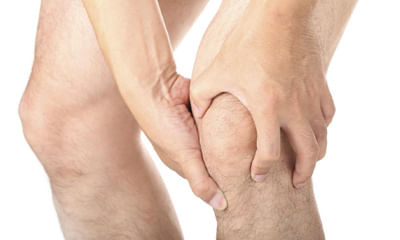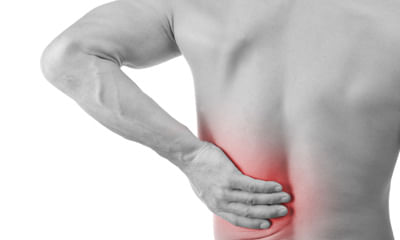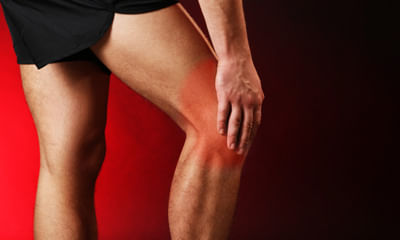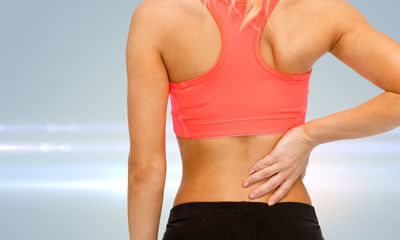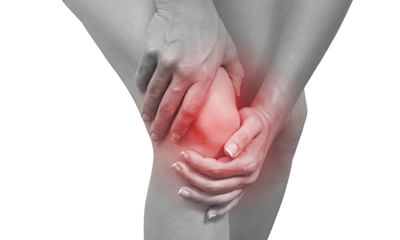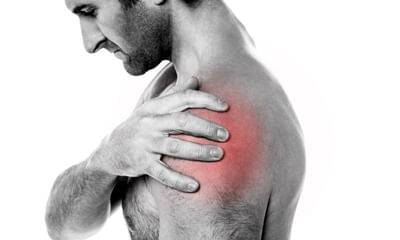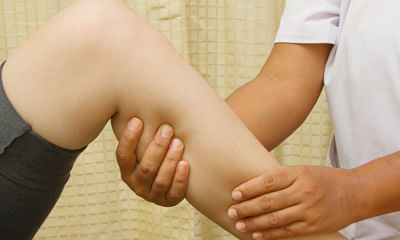Different Shaped Legs
My knee is swelling since 4 days and I can't walk properly am only 16 years can't fold and the leg shape has been change ...
Ask Free Question
Ice therapy would definitely help to reduce the inflammation. We also advise you to use knee cap which would help to prevent the knee from damaging further and also to maintain the quadriceps muscle tone. Stiffness might have developed due to weakness of the ligaments &inflammed cartilage. Specific knee exercises will also help ie. Keeping ball underneath the knee and keep pressing it. That's the simple exercise which will help you to strengthen the knee.
I am a 20 years old male and I am having pain in the bones I was on a masturbation addiction but now for 1 year I am try ...
Ask Free Question
It looks like you are anemic it is better to consume good protein in the diet and also vitamins especially vitamin d - sunshine vitamin. Get exposed in the sun which is really good for you to absorb more vitamin d from the ultraviolet rays which will enhance your bone strength and it will not let you to have more pain. Bones bowing is due to vitamin d deficiency which must have been there for you since child hood or atleast during your adolescent time. Please consult general physician and let us know how do you feel after a month after consuming tablets and taking injections.
I had acl reconstruction plus complex lateral meniscus repair surgery on 22nd may, when can I start with partial weight ...
Ask Free Question
Meniscus injury a torn meniscus can result from any activity that causes you to forcefully twist or rotate your knee, such as aggressive pivoting or sudden. What are 3 signs of a meniscus injury? Swelling or stiffness. Pain, especially when twisting or rotating your knee. Difficulty straightening your knee fully. Feeling as though your knee is locked in place when you try to move it. Typically, mild meniscus tears heal within two to three weeks. What is a meniscal injury? A meniscus tear is an injury to a part of your knee called the meniscus and is a common injury. The menisci are two crescent-shaped pads of thick, rubbery shock-absorbing cartilage in your knee joint. They lie between your thigh bone (femur) and your shin bone (tibia). In the case of meniscus tears, some people think the injury will heal over time on its own. But the truth is that there are different types of meniscus tears — and some tears won't heal without treatment. If your tear is on the outer one-third of the meniscus, it may heal on its own or be repaired surgically. If your doctor has told you that you don't need surgery to repair your torn meniscus, you may be given the green light to walk. However, you'll want to be very careful about movements that might worsen the tear or cause you pain. Avoid squatting and pivoting, which are likely to place too much pressure on the knee. To speed the recovery, you can: 1.Rest the knee. 2.Ice your knee to reduce pain and swelling. 3.Compress your knee. 4.Elevate your knee with a pillow under your heel when you're sitting or lying down. 5.Take anti-inflammatory medications. 6.Use stretching and strengthening exercises to help reduce stress to your knee. Will a knee brace help a torn meniscus? Yes. Although knee braces do not heal or treat your meniscus tear directly, they can provide extra support and stability for your knee while your meniscus injury heals. A good brace will protect your knee and take the pressure off your meniscus, allowing it to rest. Your doctor may recommend the rice regimen—rest, ice, compression, and elevation—to treat a meniscus tear. Resting your knee can help relieve your symptoms. Your doctor may suggest using a cane for a few weeks to keep weight off your knee and to stay away from physical activity that may have contributed to the injury. Steps to heal a torn meniscus naturally: rest: it's crucial to rest your knee after injury. You should not participate in activities where you could cause additional strain. Ice: apply ice to your knee for 15 minutes at four-hour intervals.
In a bike accident, I met with an injury of medial meniscus horizontal tear for the right leg. I'm interested to hear ab ...
Ask Free Question
Meniscus injury a torn meniscus can result from any activity that causes you to forcefully twist or rotate your knee, such as aggressive pivoting or sudden. What are 3 signs of a meniscus injury? Swelling or stiffness. Pain, especially when twisting or rotating your knee. Difficulty straightening your knee fully. Feeling as though your knee is locked in place when you try to move it. Typically, mild meniscus tears heal within two to three weeks. What is a meniscal injury? A meniscus tear is an injury to a part of your knee called the meniscus and is a common injury. The menisci are two crescent-shaped pads of thick, rubbery shock-absorbing cartilage in your knee joint. They lie between your thigh bone (femur) and your shin bone (tibia). In the case of meniscus tears, some people think the injury will heal over time on its own. But the truth is that there are different types of meniscus tears — and some tears won't heal without treatment. If your tear is on the outer one-third of the meniscus, it may heal on its own or be repaired surgically. If your doctor has told you that you don't need surgery to repair your torn meniscus, you may be given the green light to walk. However, you'll want to be very careful about movements that might worsen the tear or cause you pain. Avoid squatting and pivoting, which are likely to place too much pressure on the knee. To speed the recovery, you can: 1.Rest the knee. 2.Ice your knee to reduce pain and swelling. 3.Compress your knee. 4.Elevate your knee with a pillow under your heel when you're sitting or lying down. 5.Take anti-inflammatory medications. 6.Use stretching and strengthening exercises to help reduce stress to your knee. Will a knee brace help a torn meniscus? Yes. Although knee braces do not heal or treat your meniscus tear directly, they can provide extra support and stability for your knee while your meniscus injury heals. A good brace will protect your knee and take the pressure off your meniscus, allowing it to rest. Your doctor may recommend the rice regimen—rest, ice, compression, and elevation—to treat a meniscus tear. Resting your knee can help relieve your symptoms. Your doctor may suggest using a cane for a few weeks to keep weight off your knee and to stay away from physical activity that may have contributed to the injury. Steps to heal a torn meniscus naturally: rest: it's crucial to rest your knee after injury. You should not participate in activities where you could cause additional strain. Ice: apply ice to your knee for 15 minutes at four-hour intervals.
My daughter 20 years old football player her left leg meniscus tear 3rd grade I want to know surgery cost parekh hospita ...
Ask Free Question
Meniscus injury a torn meniscus can result from any activity that causes you to forcefully twist or rotate your knee, such as aggressive pivoting or sudden. What are 3 signs of a meniscus injury? Swelling or stiffness. Pain, especially when twisting or rotating your knee. Difficulty straightening your knee fully. Feeling as though your knee is locked in place when you try to move it. Typically, mild meniscus tears heal within two to three weeks. What is a meniscal injury? A meniscus tear is an injury to a part of your knee called the meniscus and is a common injury. The menisci are two crescent-shaped pads of thick, rubbery shock-absorbing cartilage in your knee joint. They lie between your thigh bone (femur) and your shin bone (tibia). In the case of meniscus tears, some people think the injury will heal over time on its own. But the truth is that there are different types of meniscus tears — and some tears won't heal without treatment. If your tear is on the outer one-third of the meniscus, it may heal on its own or be repaired surgically. If your doctor has told you that you don't need surgery to repair your torn meniscus, you may be given the green light to walk. However, you'll want to be very careful about movements that might worsen the tear or cause you pain. Avoid squatting and pivoting, which are likely to place too much pressure on the knee. To speed the recovery, you can: 1.Rest the knee. 2.Ice your knee to reduce pain and swelling. 3.Compress your knee. 4.Elevate your knee with a pillow under your heel when you're sitting or lying down. 5.Take anti-inflammatory medications. 6.Use stretching and strengthening exercises to help reduce stress to your knee. Will a knee brace help a torn meniscus? Yes. Although knee braces do not heal or treat your meniscus tear directly, they can provide extra support and stability for your knee while your meniscus injury heals. A good brace will protect your knee and take the pressure off your meniscus, allowing it to rest. Your doctor may recommend the rice regimen—rest, ice, compression, and elevation—to treat a meniscus tear. Resting your knee can help relieve your symptoms. Your doctor may suggest using a cane for a few weeks to keep weight off your knee and to stay away from physical activity that may have contributed to the injury. Steps to heal a torn meniscus naturally: rest: it's crucial to rest your knee after injury. You should not participate in activities where you could cause additional strain. Ice: apply ice to your knee for 15 minutes at four-hour intervals.
Today I was doing toilet (constipation) and then unconsciously touched my testicle I don't know I feel something round s ...
Ask Free Question
Not as such if it disappeared. Still just keep a check on the following things. 1. If you had any chest infection, cough, fever etc. For quiet sometime like 20-30 days or more. 2.if you had any stomach infection or pain. 3. Any leg ache or blue veins in the legs or pain in the calf muscles 4. Any injury to your groin area or if you practise masturbation with force 5. If you have any symptoms of male breast or gynaecomastia. See a doctor or call in case you have any of these.
Hello, I am 20 years old. For the past week, I have been experiencing pain in my right testicle, and over time, the pain ...
Ask Free Question
Hello, testicular pain is a condition that can affect males at any age. The testicles (testes) are small egg-shaped reproductive (sex) organs inside a thin pouch of skin called the scrotum. Testicular pain is pain or discomfort that is felt in one or both testicles. The pain may originate from the testicles itself, or it may be the result of other conditions affecting the scrotum, groin or abdomen testicular pain can be an acute (short-term) or chronic (long-term) condition. The testicular pain may be constant or intermittent. Potential causes of testicular pain are varicocele, hydrocele, jerk, injury, twisting, kidney stones, infection, hernia, nerve damage, fluid buildup and inflammation. Many times testicular or scrotum pain is due to. When you are in sexual arousal mood for a long period of time without any discharge… example you are reading or watching porn material or you are with your girlfriend in a common place like in garden or somewhere. And you both are in a sexual mood while talking or reading or watching a porn material but there cannot be any discharge because of the public places. After that when you come out of that sexual arousal mood. You will feel a tremendous pain in your scrotum. But that is a temporary one and that pain is gone once if you masturbate or you do sexual intercourse or the pain goes in a day or two on its own. These are some steps you can take to reduce this pain. Wear an athletic supporter or langot or tight underwear to provide support 2 the testicles. Use ice packs. Place a rolled up towel under your scrotum if you’re lying down. Take warm baths. Try non-prescription pain relievers. You must do sonography of the scrotum and show the report to your family doctor or a surgeon. Most of the times when in the report it comes varicocele and hydrocele then the permanent solution is operation only website: www.kayakalpinternational.com.
I have pain and burning below knees, ankles. Some ankles bone over growth. Seeking your advice and treatment. ...
Ask Free Question
Skeletal dysplasia a category of rare genetic disorders that affect bones and joints and hinder children's growth and development. The disorder causes abnormally shaped bones, especially in the head, spine and long bones of the arms and legs. About half of fetuses with skeletal dysplasia are stillborn or die within the first six weeks of life. But not all children with dysplasias have severe medical problems. Many of these children can live relatively normal lives the first indication that a baby has a skeletal dysplasia condition may arise during a routine prenatal ultrasound examination, usually one conducted in the second trimester of pregnancy. The image may show arms and legs shorter than average and a head larger than average. Developmental dysplasia of the hip doesn't cause pain in babies, so can be hard to notice. Doctors check the hips of all newborns and babies during well-child exams to look for signs of ddh. Parents could notice: the baby's hips make a popping or clicking that is heard or felt. Stretching and strengthening exercises or use of specialized devices may provide symptom relief. These include: physical therapy. A physical therapist can instruct you in a series of exercises to stretch the plantar fascia and achilles tendon and to strengthen lower leg muscles, which stabilize your ankle and heel. A therapist might also teach you to apply athletic taping to support the bottom of your foot. Night splints. Your physical therapist or doctor might recommend that you wear a splint that stretches your calf and the arch of your foot while you sleep. This holds the plantar fascia and achilles tendon in a lengthened position overnight and facilitates stretching. Orthotics. Your doctor might prescribe off-the-shelf or custom-fitted arch supports (orthotics) to help distribute pressure to your feet more evenly. Injections. Injecting a type of steroid medication into the tender area can provide temporary pain relief. Multiple injections aren't recommended because they can weaken your plantar fascia and possibly cause it to rupture. More recently, platelet-rich plasma has been used, under ultrasound guidance, to provide pain relief with less risk of tissue rupture. Lifestyle and home remediesto reduce the pain of plantar fasciitis, try these self-care tips: maintain a healthy weight. Lose weight if you're overweight or obese to minimize stress on your plantar fascia. Choose supportive shoes. Avoid high heels. Buy shoes with a low to moderate heel, good arch support and shock absorbency. Don't go barefoot, especially on hard surfaces. Don't wear worn-out athletic shoes. Replace your old athletic shoes before they stop supporting and cushioning your feet. If you're a runner, buy new shoes after about 400 to 500 miles of use. Change your sport. Try a low-impact sport, such as swimming or bicycling, instead of walking or jogging. Apply ice. Hold a cloth-covered ice pack over the area of pain for 15 to 20 minutes three or four times a day or after activity. Or try ice massage. Freeze a water-filled paper cup and roll it over the site of discomfort for about five to seven minutes. Regular ice massage can help reduce pain and inflammation. Stretch your arches. Simple home exercises can stretch your plantar fascia, achilles tendon and calf muscles. Heel pain prevention: maintain a healthy weight. Choose supportive shoes. Don't wear worn-out shoes. Apply ice. Ice. Use an ice pack or cold compress on your foot for 10 to 15 minutes at a time. This is especially beneficial at the end of a long day or when you’ve spent a lot of time on your feet. Or, roll a frozen water bottle under your foot. This method incorporates a bit of massage, relieving tightness in the bottom of your foot. Massage. Massaging the arch of your foot helps to relieve pain and promote mobility. Use your fingers and knuckles to deeply massage your foot for 1 to 5 minutes at a time. One technique is to place both thumbs at the center line of your arch and move them to the outer edges of your feet. Inserts. Use cushion inserts in your shoes for additional support and cushioning. Inexpensive options can be purchased off the shelf. Wear supportive shoes with thicker soles and extra cushioning for additional support that can help to reduce tension in the plantar fascia. Kinesiology tape can be used to improve arch and heel support. Night splints. Many people find quick and effective results by using night splints. They can be worn while sleeping to stretch the plantar fascia. They help to keep the plantar fascia relaxed and prevent you from pointing your feet down. Exercisefoot flexuse your hand to pull your toes back toward your shin. Hold this position for about 30 seconds. Do each side two to three times. Toe towel grab place a small towel under your foot. Curl your toes to grip the towel. Raise the front of your foot off the floor. Hold this position for a few seconds. Release the towel as you lift up your toes and spread them as far apart as possible. Heel and calf stretch to do this stretch: 1.stand facing a wall. 2.place your hands on the wall and move one foot back as far as you can comfortably. Toes on both feet should be facing forward, heels flat, with a slight bend in your knees. 3.lean into the stretch and hold for 30 seconds. You should feel the stretch in your back leg. 4.change legs and repeat. 5.do this stretch twice for both legs. Golf ball roll roll a golf baell under your right foot. Continue for up to 1 minute. Do each foot two to three times.
My right shoulder feels like its a bit forward since march. I spent the location on my computer, having a bad posture th ...
Ask Free Question
This exercise will strengthen the extension muscles in the upper back. How to do it: lie face down with your head lifted off the floor. Your lower back needs to be slightly hyper-extended. Stretch your arms straight out in a y position with your thumbs pointing up. Pull your arms back in an arc until your hands are in a ‘handcuff’ position. Slowly reverse your arms until you’re at the start. Repeat 2 or 3 times. •wall sliding (wall angels) this exercise will strengthen the scapular retractors and will provide good shoulder mobility. How to do it: stand with your back against a wall but take one small step forward. Hold your arms out in the shape of a w with your hands facing up. Push your hands up toward the wall until they reach a y position. Return your arms to the w position. Repeat 5 times. •t-spine rotation thoracic spine rotations are essential for increasing mobility in the thoracic spine region (where the kyphosis affects). How to do it: get on all fours making sure your arms are at full length and your hands are positioned just in front of your shoulders. Take your right arm and stretch out your arm. Slowly move your arm underneath your body (and slow twist at the waist) until your arm is as far through as possible and you are looking at the palm of your right hand. Slowly reverse. Do 3 of these then repeat with the other arm. •crucifix spending too much time in a seated position causes lower and upper back muscles to shorten which leads to poor posture. This stretch helps to undo these shortened muscles. How to do it: stand tall with your arms extended straight out to your sides at shoulder height. Turn your wrists so your thumbs face backwards and pull your (straight) arms up over your head. Bend your elbows until your elbow is at a 90 degree angle. Lower your left hand until it touches your shoulder. Take your right hand and place it on the left elbow. Lower your left hand as far as you can go and hold for as long as you can. Slowly release. Repeat 2 times then switch to your other arm. Do this exercise several times a day. Bad posture can contribute to the severity and appearance of pectusexcavatum. Strengthening your postural muscles can help. Because we often work on our front body — especially when strengthening our chest to help with pectusexcavatum — this exercise will help balance your body by strengthening your posterior chain — those muscles on the back of the body. 1.Lie on your stomach on a mat with your arms extended in front of you and your forehead resting on the ground. 2.As you inhale, lift your head, legs, and arms. 3.Hold for a count of 5 and gently release back to the ground. 4.Complete 2 sets of 10.
My mother l2 fracture occur and pain in legs due to stretch. Kindly suggest if you provide the treat. ...
Ask Free Question
I am sorry to hear about your concern but will be happy to assist you. A spinal fracture takes between six and 12 weeks to heal. During the healing process, spinal bones don't return to their normal shape. Let's connect over a call so that we can discuss your concern in details and make a treatment plan for you.

